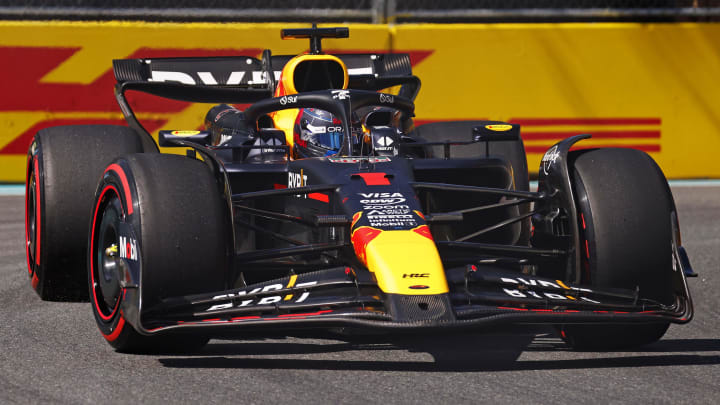F1 News: Substantial Red Bull Upgrades For Spanish Grand Prix Revealed

Red Bull and its sister team RB have rolled out comprehensive upgrades to their cars in preparation for the Spanish Grand Prix. These changes, primarily aimed at boosting aerodynamic efficiency and adapting to warmer race conditions, could provide a crucial edge as the teams navigate the demanding European leg of the season.
At the heart of Red Bull's improvements is the RB20's refined aerodynamic focus. Engineers have introduced pivotal changes designed to optimize the car's cooling capabilities, which is crucial for maintaining performance in the heat of the Spanish race. Notably, the sidepod inlets have been reconfigured to harness higher-pressure inlet air more effectively, facilitating optimal cooling without compromising the car's aerodynamics. This enhancement was driven by advanced simulation results that also prompted slight adjustments, allowing the car to run with fewer exit louvre openings, a move calculated to reduce downforce loss significantly.
Additionally, structural modifications have been integrated seamlessly with these cooling enhancements. New engine cover side panels work in harmony with the updated sidepod inlets, and there has been a careful modification of the floor geometry to align with the new engine cover split lines. The aerofoil adjustments are no less impressive. Beam wing elements have seen modifications in endplate geometry aimed at maximizing air pressure benefits and consequently increasing local load. This includes an outward adjustment of the lower third of the endplate to enhance the beam wing's breadth and efficiency.
Not to be outdone, Red Bull’s sister team has also reimagined aspects of their car. Reverting some elements like the brake ducts to more conventional configurations, the team has, nonetheless, pushed ahead with significant aerodynamic and structural revisions. The reshaped engine covers and sidepods facilitate improved airflow to the rear of the vehicle, crucial for maintaining downforce and balance through high-speed corners. Additionally, the foremost of the sidepods and the forward floor have been reprofiled, along with adjustments to the fences, underscoring a meticulous attention to detail.
A new rear wing, tailored for circuits demanding medium to high downforce, complements these changes. The existing beam wing has also undergone refinements, with a reduced camber and incidence to further fine-tune the car's aerodynamic profile for this race track.
These upgrades represent a proactive effort by Red Bull and its sister team to stay competitive as the F1 season intensifies into Europe. As other teams ramp up their efforts, these upgrades could be crucial in maintaining, if not increasing, the teams' tactical advantages in the upcoming races. The European phase of the F1 season often brings surprises and shifts in team performances, and with these substantial upgrades, Red Bull is clearly gearing up as the competition from McLaren, Ferrari, and Mercedes increases.
